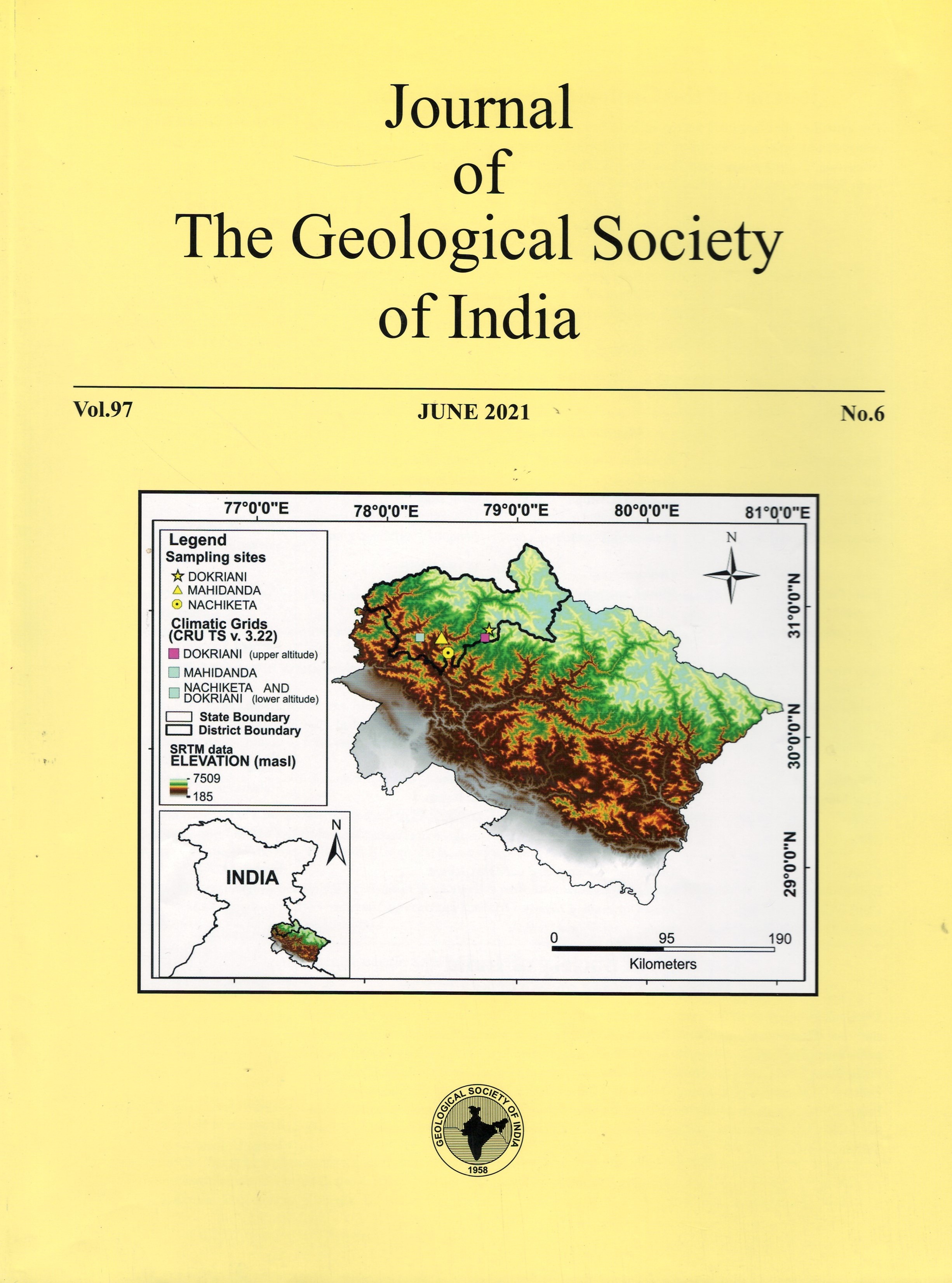Structural Analysis of Lineaments Surrounding the Kailana-Takhat Sagar Reservoir and its Impact on Rising Ground Water Levels in Jodhpur
DOI:
https://doi.org/10.1007/s12594-021-1734-yKeywords:
No keywords.Abstract
Jodhpur city has been experiencing a significant rise in ground water levels leading to inundation in recent years. Previous studies suggested that ground water flow through a set of E-W trending lineaments from the Kailana-Takhat Sagar reservoir to the city areas was causative for the rise of ground water in the city. Therefore, the present study focuses on the role of the lineaments surrounding the reservoir in facilitating ground water flow to the city areas. Our exercise involved analysis of lineaments using high-resolution satellite images followed by geological and geophysical mapping. In the satellite images, a majority of the lineaments are oriented in the NNE-SSW to NE-SW directions with no connectivity to the city areas. A few lineaments with ESE-WNW orientations are present but these are small, without any connectivity to the affected areas in the city. Field studies involving 4800 strike/dip and fracture spacing measurements along the lineaments reveal the predominance of NNE-SSW to NE-SW oriented fracture systems similar to the lineaments. The lineaments surrounding the reservoir have a mean fracture spacing of ~15-30 cm. The fracture related secondary porosity is small (< 1%), which is significantly lower than the bulk porosity of the Jodhpur sandstone (8.4 %) which is abundant in the affected city areas. Multichannel analysis of surface waves studies at twenty earmarked sites across the lineaments did not reveal any major fracture in the subsurface up to a depth of 35 meters, thereby corroborating the findings that the structural lineaments abounding the Kailana-Takhat Sagar reservoir cannot serve as ground water conduits for transporting ground water to the inundated areas in Jodhpur.
Downloads
Metrics
Issue
Section
Downloads
Published
How to Cite
References
Central Ground Water Board, (2015) Report on Rising water level problems In Jodhpur city Area, Rajasthan, Central Ground Water Board, Western Region, Jaipur. http://cgwb.gov.in/CGWA/NGT/JodhpurCityRising_ WL_Final_Report.pdf.
Gupta, A.K., Sharma, J.R., Bothale, R., Dharmavat, R., and Singh, P., (2007) Jodhpur the gateway of Indian desert- Study on rising ground water levels in the city. ISG Newsletter, no.13, pp.42-52.
Lakshmi, K.J.P. and Senthil Kumar, P. (2020) Physical properties of basalt ejecta boulders at Lonar crater, India: Insights into the target heterogeneity and impact spallation processes in basalt with application to Mars. Jour. Geophys. Res.: Planets, v.125, e2020JE006593. DOI:10.1029/ 2020JE006593.
Naik, P.K., Tambe, J.A., Dehury, B.N., and Tiwari, A.N. (2008) Impact of urbanization on the groundwater regime in a fast growing city in central India. Environ. Monit. Assess., v.146, pp.339–373.
National Institute of Hydrology (2011) Study on rising groundwater table in Jodhpur city, and to evolve a management plan for containing the rising trend. Final Report, National Institute of Hydrology.
Paliwal, B.S., and Rathore, P.S. (2000) Neoproterozoic volcanics and sedimentaries of Jodhpur: A reappraisal. In: Gyani, K.C., and Kataria, P. (Eds.), Proc. National Seminar “Tectonomagmatism, Geochemistry and Metamorphism of Precambrian Terrains”, University Department of Geology, Udaipur, pp.75-94.
Pandey, D.K., and Bahadur, T. (2009) A review of the stratigraphy of Marwar Supergroup of west-central Rajasthan. Jour. Geol. Soc. India, v.73, pp.747- 758.
Park, C. B., Miller, R. D., and Xia, J. (1999) Multichannel analysis of surface waves. Geophysics, v.64, pp.800-808.
Seshunarayana, T., Senthil Kumar, P., Sampath Rao, V., Mysaiah, D., Satish Kumar, K., and Pavan Kishore, P. (2008) Multichannel analysis of surface waves reveals shear zones and fractures in a shallow granite basement: Wailapally watershed near Hyderabad. Jour. Geol. Soc. India, v.71, pp.261- 265.

 Rajeev Menon
Rajeev Menon






